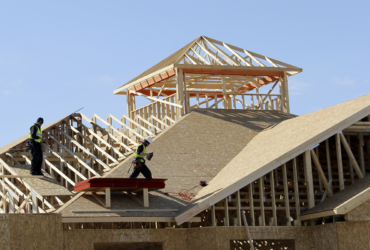Existing-home sales in the South soared by an unexpected 9.8% in February, marking a significant uptick in housing market activity. According to recent data released by the National Association of Realtors (NAR), existing-home sales reached a seasonally adjusted annual rate of 2.02 million in the South, showcasing the region’s resilience and vitality in the face of economic uncertainties. This surge not only reflects renewed confidence among buyers but also underscores the underlying strength of the housing market amid changing dynamics.
The surge in sales across all four regions propelled existing-home sales nationally to a seasonally adjusted annual rate of 4.38 million, up 9.5% from January and reaching the highest level since October 2022. This remarkable increase, the largest monthly gain since February 2023, surpassed economists’ expectations of a 1.3% drop, indicating robust momentum in the housing market.
The median existing-home sales price also witnessed a notable uptick, rising to $384,500, marking a 5.7% increase from the same period last year. This marks the eighth consecutive month of year-over-year price gains, indicating sustained appreciation in housing values. Despite concerns about affordability, demand continues to drive prices upward, reflecting the ongoing imbalance between supply and demand.
Total housing inventory at the end of February registered at 1.07 million units, reflecting a 5.9% increase from January and a 10.3% rise from the previous year. While this uptick in inventory offers some relief, the supply remains tight, with unsold inventory representing a 2.9-month supply at the current sales pace. This suggests that despite the increase in inventory, the market continues to favor sellers, exerting upward pressure on prices.
One notable trend in the current market environment is the prevalence of cash homebuyers, who accounted for 33% of transactions in February, up from 32% in January and 28% one year ago. This indicates the elevated rates continue to dissuade buyers from financing their purchase if they have the means to do so.
Lawrence Yun, NAR chief economist, commented on the slight rise inventory, noting, “Additional housing supply is helping to satisfy market demand…Housing demand has been on a steady rise due to population and job growth, though the actual timing of purchases will be determined by prevailing mortgage rates and wider inventory choices.” Yun’s remarks underscore the importance of addressing supply constraints to ensure a balanced and sustainable housing market.
Overall, the unexpected surge in existing-home sales reflects a housing market poised for continued growth as we enter 2024. While challenges such as inventory constraints and affordability concerns persist, the market’s underlying fundamentals remain strong, driven by favorable demographic trends and economic conditions. As the housing market continues to evolve, policymakers and industry stakeholders must remain vigilant in addressing key issues to sustain long-term stability and affordability.





